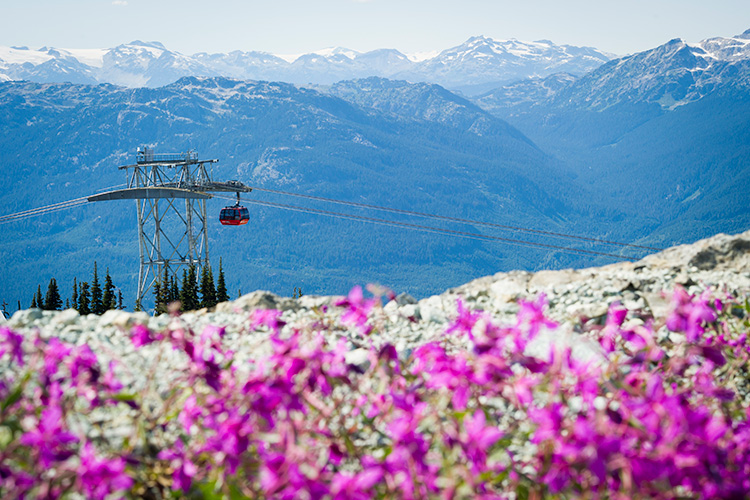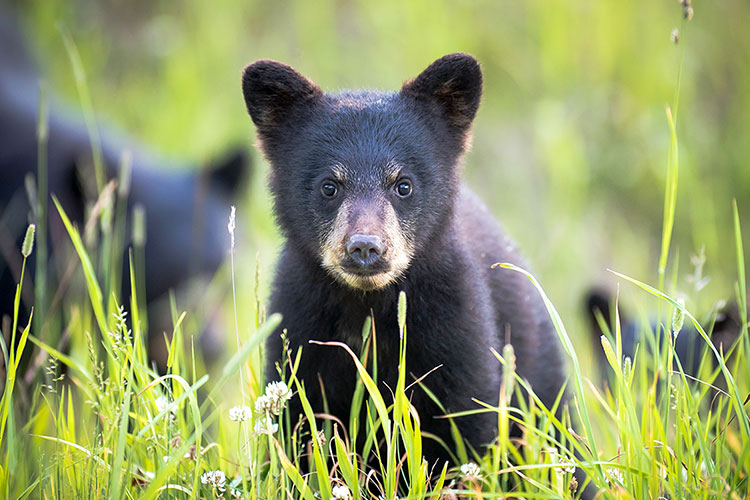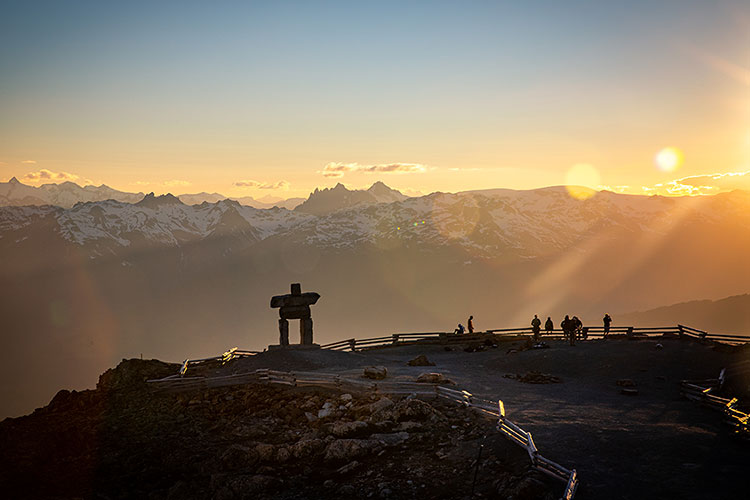With its unique Pacific Northwest rainforest and alpine ecosystems, Whistler is home to a large variety of plant species, including countless wildflowers. Therefore, it’s no surprise that the gorgeous natural surroundings of our mountain valley spark creativity, resulting in a thriving artist and artisan community.
To take home a little piece of Whistler, here are some of the best floral gifts you’ll find in the Village.
Wonderful Wildcrafters
Whistler’s artists create some truly inspired interpretations of our mountains, trees, lakes and flowers through paintings, sculpture, carvings, photography, and clothing. Likewise, artisans and wildcrafters delight in the abundance of natural medicines and healing herbs that grow around the valley, brewing potions and lotions to bring your skincare onto a more natural and homegrown level.
View this post on Instagram
As you meander the forest paths and alpine trails of Whistler, you may be tempted to take home a memento of your adventure, by picking a flower, harvesting berries, or collecting tree branches off the ground. In Whistler, we subscribe to the adage – leave nothing but footprints, take nothing but pictures. And while a photo can be a beautiful memory, we suggest making a stop in Whistler Village for a little nature-inspired memento shopping.
Thanks to the artists and artisans of Whistler, you can take home a little bit of nature, without disturbing nature.
Lovely Lupine
Lupine is a quintessential alpine wildflower. These flowers grow into tall, tapered spikes of small bluish-purple blooms, with leaves comprised of pointed leaflets that form a star like shape.
View this post on Instagram
Where to Find It
Along the sides of the Whistler Valley Trail in June and July, and on alpine trails closer to midsummer.
Featured Local Product
View this post on Instagram
Lupine leggings by Heidi the Artist (Heidi Denessen). Heidi is a long-time resident of the Sea to Sky and has graced the Whistler Farmers’ Market with her colourful, nature-inspired art and floral gifts for years. She has her original paintings of lupines and other wildflowers printed onto spandex fabric to create these eye-catching leggings. Heidi also donates 1% of her sales to Protect Our Winters and the Squamish-Lil’wat Cultural Centre.
View this post on Instagram
Where to Purchase
Find the leggings at the Maury Young Arts Centre’s Gift Shop, Heidi’s booth at the Whistler Farmers’ Market and online.
Fireweed Flair
Fireweed’s tall stalks can grow to human height, with long leaves spreading out all the way up the stem and crowned by a conical cluster of bright pink flowers – it’s a striking plant.
Fireweed is a pioneer species that grows in open, sunny areas and earned its name because it’s one of the first plants to recolonize burned-over land after a forest fire. The young shoots are edible and often called wild asparagus because of their flavour. As the summer season progresses and the flowers wilt, fireweed stalks become fluffy with seed-containing cotton that will eventually float off to seed more fireweed.
Where to Find Them
Anywhere in Whistler that is open and sunny. You can find it along the Whistler Valley Trail, particularly near Fitzsimmons Creek (close to the Village) and Alta Lake. In the mountains, there are clusters of fireweed close to the Roundhouse Lodge on Whistler Mountain.
Local Featured Product
The Fire and Ice art print by Vanessa Stark. The mountain in this beautiful artwork is Mount Currie in Pemberton, a 20-minute drive north of Whistler Village. Vanessa describes her art style as mountain-style and is known for her bright, glowing colours and bold lines.
View this post on Instagram
Where to Purchase
Maury Young Arts Centre’s Gift Shop, Vanessa’s booth at the Whistler Farmers’ Market and online.
Wild Rose Wonder
Wild rose is a bit of a catch-all term for a number of native rose species. Whistler has two major ones – the baldhip rose and the Nootka rose – but the term wild rose more frequently refers to the Nootka rose.
Identified by its open, pink blossoms with yellow centres and paired leaflets along the stem, or its round red rosehips in the early fall, Nootka Rose grows on small-to-medium shrubs. The flowers have traditional Indigenous medicinal uses and the rosehips are a traditional food source (and make a lovely tea).
View this post on Instagram
Featured Local Product
Kalkáy Wild Rose & Yarrow Salve from Skwálwen Botanicals. Skwálwen Botanicals (skwall-win) is owned and operated by Leigh Joseph, an entrepreneur from the Skwxwú7mesh First Nation in neighbouring Squamish.
The brand honours the traditional use of native plants in Indigenous medicines and uses sustainably harvested rose petals and yarrow blossoms in a wonderful healing salve that soothes minor skin irritations and burns. The name, Kalkáy, is the Skwxwú7mesh word for wild rose bush.
View this post on Instagram
Where to Purchase
3 Singing Birds (located in Marketplace Shopping Centre and at the Fairmont Chateau Whistler) and online.
Western Red Cedar
Western red cedar is the classic Pacific Northwest evergreen tree and is culturally significant to our local First Nations. Traditionally, the bark was used for clothing, baskets and rope, while the logs were carved into canoes, paddles and ceremonial masks, and were used to build lodging. The branches have distinct scales instead of needles, and the bark appears to be comprised of long, thin strips. The cut wood has a strong, sweet smell to it and is a gorgeous reddish colour.
View this post on Instagram
Where to Find Them
Anywhere around Whistler Valley. For the biggest, oldest and most impressive cedar trees in the area, we recommend hiking the Ancient Cedars Trail.
Featured Local Product
The cedar paddle necklace craft kits from the Squamish Lil’wat Cultural Centre (SLCC). Cedar is such an important part of the culture for our two, distinct Indigenous nations, the Skw̲xw̲ú7mesh Nation and Lílw̓at Nation, and we highly recommend a visit to learn more about this incredible tree and the people who have used it for thousands of years.
View this post on Instagram
The SLCC has since offers in-person craft activities as well as virtual take-home craft kits. The cedar paddle necklace is appropriate for children aged five to seven, although no one says adults can’t enjoy this fun activity too! There are plenty of other craft kits to choose from and the SLCC gift shop has some amazing hand-carved cedar masks too.
View this post on Instagram
Douglas Fir
Douglas fir has historically been one of the most logged tree species in British Columbia but it is still abundant throughout Whistler as part of our second-growth forests. Easily identifiable, the needles are short and spiky but not painfully sharp and the cones have three-pointed bracts poking out from each scale.
These bracts look suspiciously like tiny mouse behinds hiding in the cone, a reminder of an old First Nations legend. During a long-ago forest fire, the birds flew away and the larger animals ran away, but the mice were too small and slow to outrun the fire. They were saved by the Douglas fir who graciously allowed the mice to climb up its tall trunk and hide in its cones.
Where to Find Them
Just about everywhere in Whistler. Take a stroll through Lost Lake Park and check out the Nature Trail, which has an accompanying video series at ten points along the trail that will tell you about the trees, animals and natural history of the area.
Featured Local Product
The Cathedral Grove candle by Hollow Tree Candle Co. Their company was born out of a passion to express the beauty of the Pacific Northwest through scent and we think they do a fantastic job of it. The candles are made of coconut wax with a cotton wick and poured into environmentally friendly clay jars (which can be reused for household décor or recycled after the candle is done). The Cathedral Grove candle, although named for a location on Vancouver Island, delights us with its strong, forest-y, Douglas fir fragrance.
View this post on Instagram
Where to Purchase
3 Singing Birds, Audain Art Gallery, Whistler Animals Galore (WAG – Nesters), Patina Home Interiors (Function Junction), 122 West (Creekside).
Tule Rush (too-lee)
Tule rushes are similar to bulrushes but have rounded stems rather than flat ones. They grow all summer long in marshy areas around our lakes and are ecologically significant in that they prevent erosion in our delicate wetlands. They were traditionally used by many Indigenous peoples to weave mats, baskets and bowls.
Where to Find Them
In Whistler’s marshy wetlands, particularly at the north end of Alta Lake at the entrance to the River of Golden Dreams and around Rainbow Park – they grow straight up out of the water.
Featured Local Product
A woven basket by Cheryl Massey. Take home a useful and unique souvenir to display in your home. Cheryl gathers the tule rush every June and dries them all summer on her workshop roof before they are ready to be weaved into baskets of all shapes and sizes.
View this post on Instagram
Where to Purchase
Maury Young Arts Centre’s Gift Shop, at the Vincent Massey Pottery Gallery (in Sechelt) and online.
Stinging Nettle
Stinging nettle is an herbaceous perennial, meaning it doesn’t have a woody stem and will grow back year after year in the same spot. The large leaves have an almost teardrop shape with a serrated edge, and the stem is covered in small hairs known as trichomes.
View this post on Instagram
It’s these stinging hairs that give the plant its name as the tips come off when touched and inject chemicals into whatever was unlucky enough to touch it (this is a natural defense mechanism of the plant, which prevents it from being eaten). Oddly, the leaves are edible to humans and make for a lovely tea, and are used in natural medicine and floral gifts (although we highly recommend leaving the harvesting of nettles to the professionals due to the potential of an uncomfortable rash).
Where to Find Them
Stinging nettle is an understory plant found in wetter environments. You might come across some in the Emerald Forest or when hiking in Whistler Interpretive Forest.
Featured Local Product
Natural ink art by Kassandra Turmel, an abstract artist based in Whistler. She is primarily known for her alcohol ink masterpieces, but has recently branched out into creating her own inks out of natural pigments derived from avocado pits, lavender buds, blueberries, birch bark, rocks and minerals, and now stinging nettle! The nettle ink provides the softest, most delightfully calming shade of green. This is what we mean when we say Whistler’s natural environment inspires art.
View this post on Instagram
Where to Purchase Floral Gifts
Maury Young Arts Centre’s Gift Shop, Whistler Farmers’ Market and online.
If you want to see Whistler’s wildflowers in bloom, consider visiting in July and August and taking a ride up to the alpine at Whistler Blackcomb. For more information on when and where to see Whistler’s wildflowers read The Hills Are Alive: Alpine Wildflower Season in Whistler.
Whistler’s weekends are typically busy, so consider coming midweek for a quieter experience and the best deals on accommodation. The longer you stay, the more you save with room rates dropping as you book more nights.


 (he/him) (@nerdyaboutnature)
(he/him) (@nerdyaboutnature)
